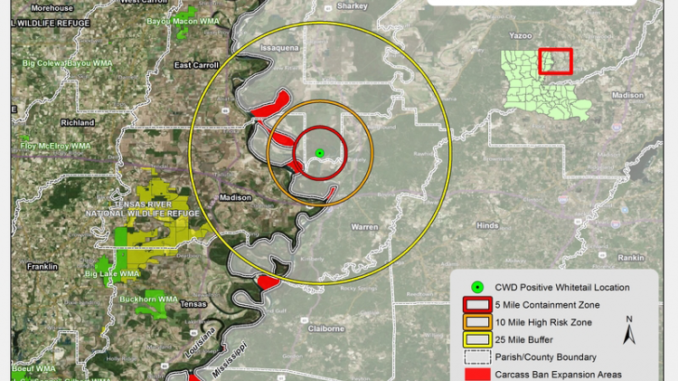
Measure affects hunters in parts of East Carroll, Madison and Tensas parishes
At its October meeting, the Louisiana Wildlife and Fisheries Commission approved a declaration of emergency that expands the current cervid carcass importation ban to include Louisiana lands east of the Mississippi River.
The measure went into effect immediately, and is designed to reduce the risk of chronic wasting disease from spreading into Louisiana. It has not been detected here, but was discovered in Issaquena County, Mississippi on Jan. 25 — only a few miles from the Louisiana border.
The regulation now reads in part: No person shall import, transport or possess any cervid carcass or part of a cervid carcass originating outside of Louisiana, including Louisiana lands east of the Mississippi River in East Carroll, Madison and Tensas parishes, except: for meat that is cut and wrapped; meat that has been boned out; quarters or other portions of meat with no part of the spinal column or head attached, antlers, clean skull plates with antlers, cleaned skulls without tissue attached, capes, tanned hides, finished taxidermy mounts and cleaned cervid teeth.
CWD has been discovered in 25 states including Texas, Arkansas and Mississippi. It is a fatal neurodegenerative disease affecting members of the family Cervidae, which includes white-tailed deer.
The disease is caused by misfolded proteins called prions. These prions can be shed in saliva, urine, feces and decomposing carcasses. Infectious material can contaminate soil, becoming available for uptake by plants, which increasing transmission when the plants are consumed.